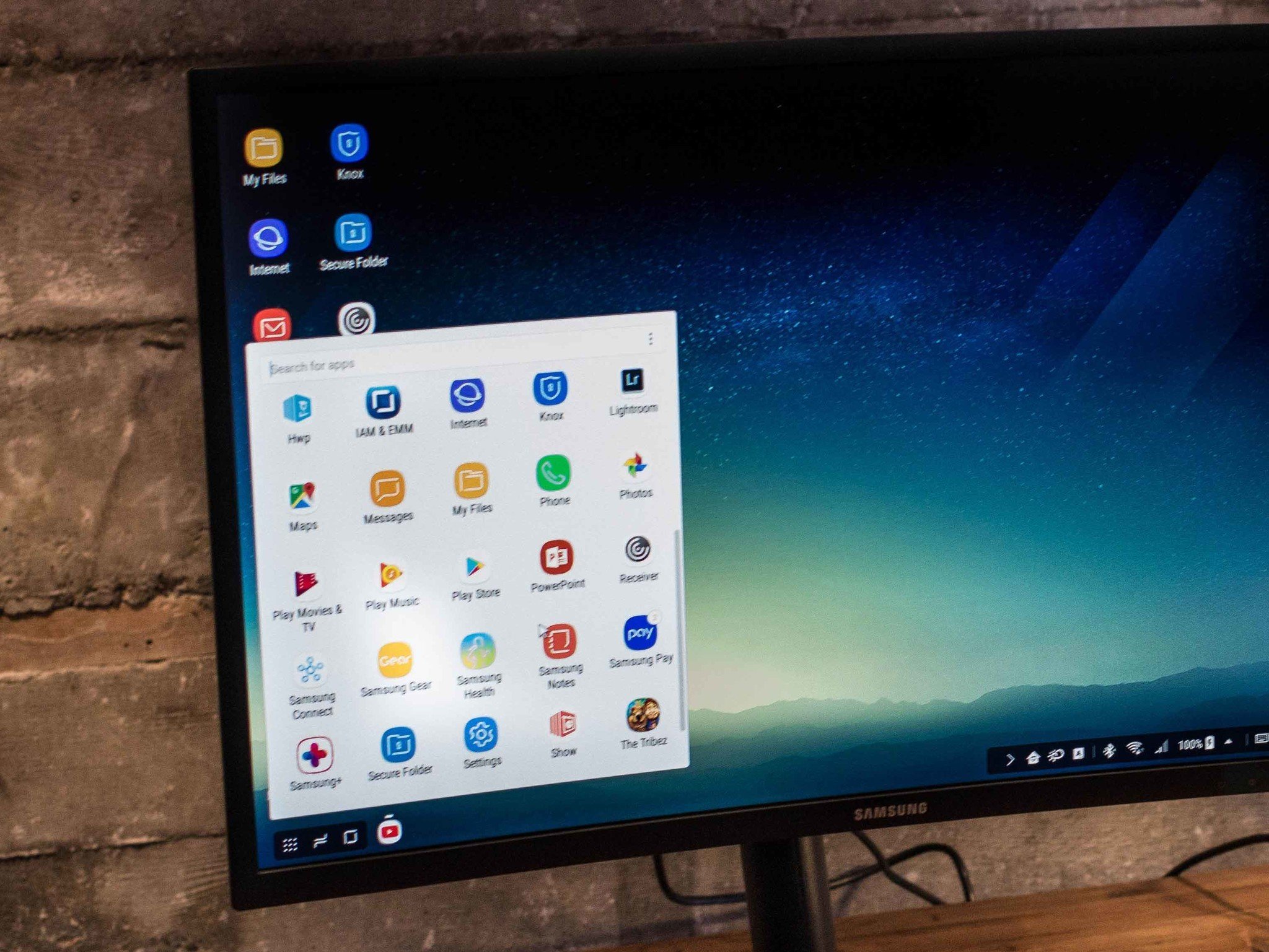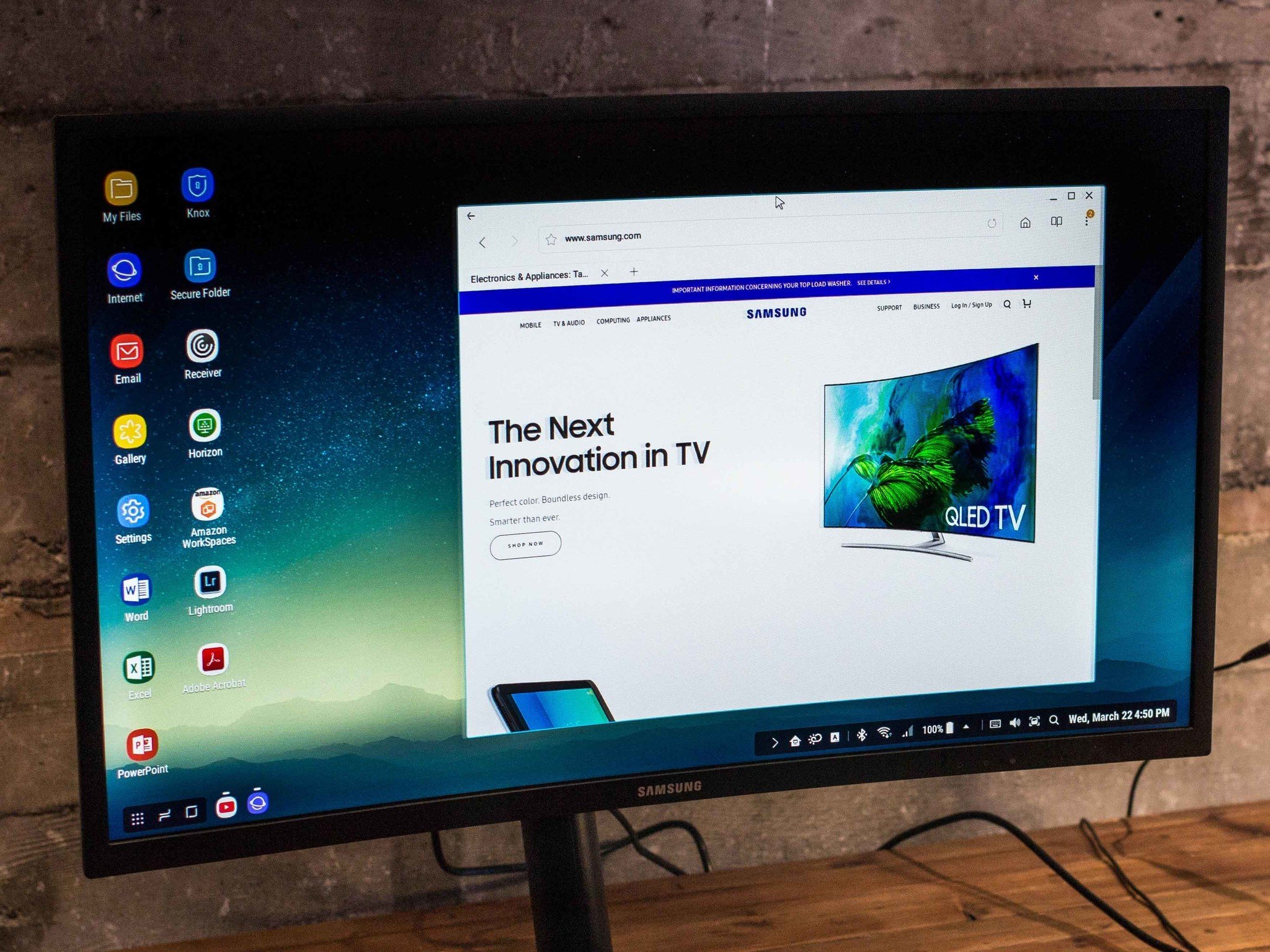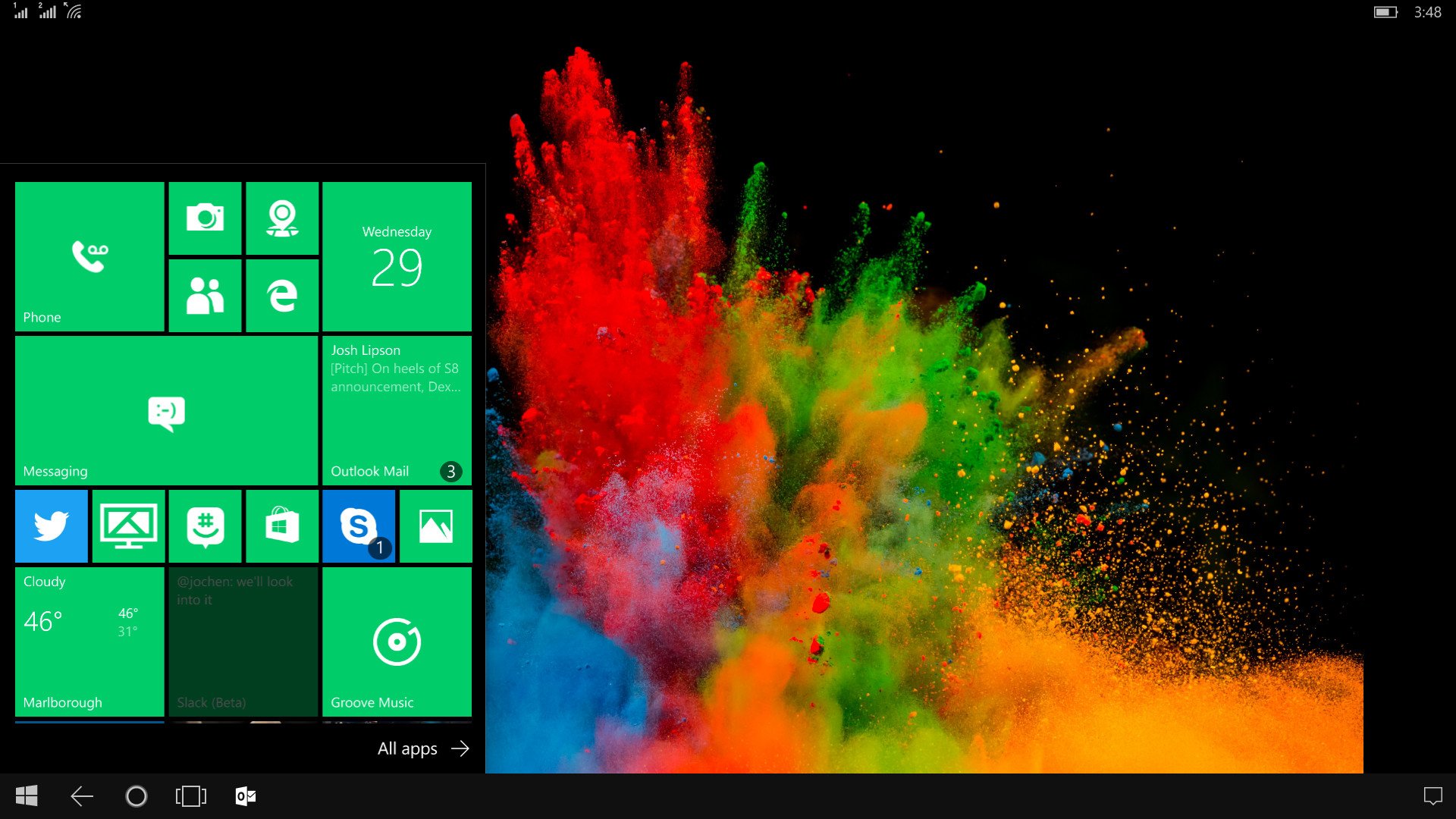Samsung DeX may beat Microsoft's Continuum, but it's still no slam dunk
Samsung's new Microsoft Continuum competitor "DeX" is impressive, but is it enough to really woo consumers? Here is why Samsung faces the same uphill battle that Microsoft does with hybrid devices.

Samsung yesterday announced the Galaxy S8 in a bold attempt to regain ground lost because of its Note 7 battery debacle. For the most part, the company appears to be on the right track. Early hands-on reviews are gushing over the phone's design, feature set, and new abilities. One of those capabilities is DeX, which is a terrible name but also an impressive feature.
Samsung's DeX lets Galaxy S8 owners connect to a larger display – with a dock to become a PC ... kind of. That sounds a lot like Microsoft's Continuum, but it addresses a different problem for Samsung: how to move Android to the desktop from mobile. That's the opposite issue that Microsoft is trying to solve.
Five things to know about the Samsung Galaxy S8 and the DeX dock
Nonetheless, Samsung's DeX, which while very impressive as a 1.0 product, is hardly a sure-fire hit. Here are a few reasons to keep the idea of DeX as a threat to Microsoft Continuum in check.
Samsung DeX is not cheap
When HP's Elite x3 hit the market, many consumers balked at the $799 price tag. However, that amount included the premium HP Desk Dock with multiple USB ports and an Ethernet jack.
In comparison, the Samsung Galaxy S8 retails for $750 with no desk dock, and the S8 Plus is $100 more. Samsung did not announce the pricing and availability of its desk dock, but some earlier reports pegged it at $150 (it also has a fan to cool things down, which is interesting; what happens with a wireless connection, if possible?).
The point here is not that Elite x3 is some value proposition, but that at $900 (plus tax) Samsung's S8 and DeX are not priced for your average consumer. And that's not even including the "spare" display monitor needed.
Get the Windows Central Newsletter
All the latest news, reviews, and guides for Windows and Xbox diehards.
Keep in mind, Microsoft's long-term vision of Continuum is for emerging markets where many people will never have a decked-out Core i7 desktop PC. We're still years from that idea as pricing needs to come down, but it is not clear that middle- and upper-class consumers are the most viable target for Continuum or DeX in 2017.
Who is DeX for?
Microsoft's Continuum always seemed like a neat concept, but even with the Creators Update, it is best described as half-baked. Nonetheless, companies such as HP see real value in the idea — even if it's not fully realized today — for enterprise and specific professional markets where security and management are valued. Those are safe bets for HP due to no expenditure needed for consumer advertising and stocking store shelves.
HP's move is smart, too, because as many critics have pointed out in the past, what regular consumer would want or need Continuum today? The technology is expensive, a bit clunky, and slow, especially compared to a laptop or tablet that users already likely own.
Those are valid points, and they all apply to Samsung's DeX too, just on a larger scale. It is not only still expensive, it is not clear consumers need or even want an Android desktop solution.

Enterprises and businesses do not want Android due to the complexities of managing its security vulnerabilities. It is also evident that Samsung is not even targeting companies with the Galaxy S8 and DeX, just prosumers.
Perhaps the oddest omission by Samsung with DeX is the modality. A lap dock would seem more apropos for consumers in 2017 than a desktop monitor. While nothing precludes Samsung from making such a device later, it is peculiar it did not start there first.
Samsung's app gap problem
Despite all of Google's success with Android, one area where it has failed is tablets. That's not for a lack of trying. Samsung and many other companies keep trying to win over audiences with Chromebooks and tablets, with little success. Chromebooks are seeing victory in U.S. schools, but that's about it.
Part of the problem is that Android apps just do not scale very well. Developers need to do some heavy coding to make the apps tablet-ready, and due to lack of market share as an incentive, many do not bother.
Microsoft's Universal Windows Platform (UWP), on the other hand, gives developers Continuum for free. Developers have little, if any, work to do in making a UWP app Continuum-ready. There are some mouse and cursor controls and making sure its elements work well scaled, but if it runs on Windows 10 for PC, it can run on Continuum. It's that simple.

Out of the sixty apps installed on my Elite x3, 95 percent of them run in Continuum with Slack being the biggest holdout. (It's not UWP.) AccuWeather, Bank of America, Deus Ex Go, Enpass, Facebook, GroupMe, Instagram, iNi Reader, Huetro for Hue, myTube, Sygic GPS, The Guardian, Twitter, and Uber are all Continuum-enabled, because the process is not a big deal for the developers.
Microsoft's problem is not the app framework, but the lack of market incentive for developers to make more apps that phone users want. (A lack of quality could also be an issue.)
That's not a small problem, but Microsoft's solution for Continuum is baked into Windows 10 and UWP. By comparison, the solution for Android is a bit of a kludge. This foundation is one area where Microsoft is ahead of Apple and Google: OneCore and Composable Shell (CSHELL). The platform is designed from the ground up to be hardware agnostic, whereas Android and iOS are not.
Another significant problem that Microsoft faces, and that DeX does not directly address, is "classic" Win32 desktop apps. At least with Windows 10 on ARM and its Win32 emulation, Microsoft has a path. Android is forever locked out of that ecosystem except for virtualization, which is not always ideal.
Why Microsoft keeps working on Windows 10 Mobile: ARM, cellular, and the next big thing
Samsung, however, has a lot of market power and momentum with the Galaxy series. If there was one company to will something into existence, Samsung could be the one. But does anyone really believe DeX will drive adoption of compatible apps that scale to larger displays? That seems unlikely, at least for the immediate future.
The bottom line on Samsung DeX: None of this is easy
I don't want to diminish what Samsung accomplished with DeX. Let's admit the obvious that out of the gate it is more impressive than Microsoft's Continuum today. That is very notable, and frankly, it bodes well for all companies who endeavor to bridge the mobile computing world.
It should also worry Microsoft a bit, though the company clearly knew DeX was coming - after all, it helped Samsung by making its Office suite scalable.
What CSHELL will bring to Continuum later this year...but is it too late?
Sure, Microsoft is expected to push many improvements to Continuum in the fall with Redstone 3, which brings CSHELL to Mobile. That feature will also include windowed apps and improved Continuum performance. Alas, such improvements are "coming soon" versus Samsung's late April launch of DeX.
The weird thing with DeX and Continuum is everyone thinks it is neat, but consumers are not yet on board. At least not with their wallets.
Conceptually, DeX is a fun idea, and Samsung is pushing it further into the consumer mindset. That's good for Samsung as well as Microsoft. Microsoft is betting Windows 10 because it is hardware agnostic. Continuum, UWP, Windows 10 on ARM, CShell and OneCore are the underpinnings designed to get it there. Android and iOS will struggle with this shift.
While DeX is making waves, it is unclear that consumers will rush to adopt it. Like Continuum, it seems unlikely that your average person will fork over another $150 for the feature. Would someone give up a full laptop, whether it is Windows or macOS, for DeX? Maybe, but let's not call it mainstream just yet.
Modular computing is the future, make no mistake. However, the road ahead is a long one, and Samsung's DeX is just another milestone.

Daniel Rubino is the Editor-in-chief of Windows Central. He is also the head reviewer, podcast co-host, and analyst. He has been covering Microsoft since 2007 when this site was called WMExperts (and later Windows Phone Central). His interests include Windows, laptops, next-gen computing, and wearable tech. He has reviewed laptops for over 10 years and is particularly fond of 2-in-1 convertibles, Arm64 processors, new form factors, and thin-and-light PCs. Before all this tech stuff, he worked on a Ph.D. in linguistics, performed polysomnographs in NYC, and was a motion-picture operator for 17 years.
